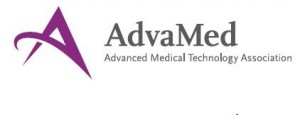AZBio partners with LexisNexis and StateNet to bring you all the latest updates from Washington DC and around the nation. Check out the latest in the November 7, 2011 edition. Continue reading
Category Archives: Government Affairs Blog
AZBio Trailblazer Honorees Announced
AZBio honors Arizona Legislators with 2011 Trailblazer Award:
Tobin, Tovar, Campbell, Goodale, Carter, Jackson, Sinema, Reagan , Crandall, and Williams recognized for supporting education, innovation and the growth of Arizona’s bioscience sector.Continue reading
News from the Capitols – October 24, 2011
AZBio partners with LexisNexis and StateNet to bring you all the latest updates from Washington DC and around the nation. Check out the latest in the October 24th edition. Continue reading
AdvaMed issues statement on Final Accountable Care Organization Regulation
October 20, 2011 , WASHINGTON, D.C.
 Ann-Marie Lynch, executive vice president of the Advanced Medical Technology Association (AdvaMed), released the following statement regarding the Centers for Medicare and Medicaid Services (CMS) final rule on Accountable Care Organizations (ACOs):Continue reading
Ann-Marie Lynch, executive vice president of the Advanced Medical Technology Association (AdvaMed), released the following statement regarding the Centers for Medicare and Medicaid Services (CMS) final rule on Accountable Care Organizations (ACOs):Continue reading
AdvaMed Applauds Introduction of FDA Reform Legislation
Oct. 14, 2011 WASHINGTON, DC –
Stephen J. Ubl, president and CEO of the Advanced Medical Technology Association (AdvaMed), released the following statement today upon the introduction of the “Saving
American Jobs and Saving American Patients” legislative package in the U.S. House of Representatives that would reform the FDA device review process:Continue reading
AZBio writes to Congress on Medicare Part B and ASP+6

To: The Members of the Arizona House Delegation
From: The Members of the Arizona Bioscience Industry
RE: Proposed lowering of the ASP percentage from 6% to 4% could have dangerous side effects and information in support of the Lance/Pascrell letter that is being circulated.
We have a lot of things that need fixing at the moment as the financial burden our country bears comes under further review and adjustments. Many of our systems are broken, but some are working. ASP and Medicare Part B is a case in point.
In keeping with the Arizona BioIndustry Association’s commitment to monitor key issues and to share key information on areas that affect our community, our state and our nation, the following points are offered to assist you on how best to control healthcare costs and protect jobs while serving the best interests of millions of Americans and tens of thousands of Arizonans who are touched directly or indirectly by the current ASP rates and the Medicare Part B Program.
HISTORY/BACKGROUND: ASP and Biologics:
Biologics are used to treat some of the most serious diseases. Many of these products are infused directly into the patients’ blood stream and require administration in a physician’s office because of their complexity and the need to monitor how the patient is responding. Medicare pays for these products under Part B of the statute and pay for the product at the average sales price plus a physician add-on that covers the handling and administration of the product. This system was created as a replacement to the old system in order to better reflect the cost of the products. The change in the program is estimated to have saved $16 billion since the MMA was implemented in 2005.
ASP+6% is working well and there is no policy argument for reducing the add-on payment down to 3%. MedPac, which makes recommendations to Congress on CMS policy, has found that the 6% is an adequate payment level. The only reason to dial down the % is to save the government money, approximately $3 billion but is unlikely to be a true savings as these costs will reappear in other places.
Some providers, especially in rural areas, are already struggling. Many of these providers are small businesses that provide lifesaving medical services in their communities. Passing the cost burden to these small companies could result in curtailment of their service offerings in their communities. As services are cut back, jobs are lost.
Dialing down the percentage has the potential to really disrupt the delivery system, creating potential access problems for patients and ultimately costing the government more as these patients end up in the hospital for either the initial treatment or complications caused by limited access to these treatments and
services that land them in the hospital with more serious problems later.
In addition, the regulatory changes that would be needed to implement this change may face significant hurdles in implementation during the Regulatory Flexibility Review. As you know, The Regulatory Flexibility Act, which was created in 1980 and amended in 1996, requires federal agencies to assess the economic impact of proposed and existing regulations on small businesses. Rules found to be too burdensome must be replaced with alternatives. A government mandated profit margin that falls below the operating costs of these small businesses will effectively drive small business providers out of the market as they would not be able to sustain operations at this level or compete with large businesses that have other areas where they can shift costs to keep their operations solvent.
The 6% is not all profit for these providers. Within that they have to deal with numerous factors critical for their business model including the prompt pay discount, bad debt, handling and administration and others. Lowering the add-on will force certain providers to no longer take Medicare patients, forcing them into the hospital setting which is more expensive and less convenient.
This sort of disruption, to a system that is working, for a cost saving estimated at $3 billion over 10 years will have dangerous side effects for little to no real benefit. This is basically a rounding error in the larger healthcare cost and budget debate and once the unintended consequences to small businesses, jobs, and patient access are added in potentially a net increase healthcare costs and yet another hurdle for businesses of all sizes as we strive for economic recovery.
As I shared in the beginning, ASP and Medicare Part B is Working. It has allowed us to reduce healthcare costs and through the products it covers stimulate innovation and create jobs. The current 6% level offers a slim but manageable profit margin for small business providers. Fixing a system that is not
broken could negatively impact thousands of Arizonans and millions of Americans. I know you have a lot on your plate in solving the financial challenges our country is facing. Perhaps it is time to take changes to the ASP+6% Rate and Medicare Part B off the “fix it list” and use our scarce resources to address other challenges that can truly use the help.
On behalf of the Arizona BioIndustry and our community, I thank you for taking the time to read this letter and for doing what is best for all of us.
Sincerely,
Joan Koerber-Walker President and CEO AZBio – The Arizona BioIndustry Association SkySong, 1475 N. Scottsdale Road, Scottsdale, AZ 85257
Want To Move Forward Faster? Activate The Collaborative Gene
 Arizona biosciences sector demonstrates how to accelerate innovation and job growth and offers insight on how Washington can keep things moving forward faster by activating its “collaborative gene.”
Arizona biosciences sector demonstrates how to accelerate innovation and job growth and offers insight on how Washington can keep things moving forward faster by activating its “collaborative gene.”
These days tales of economic vitality are few and far between making Arizona’s bioscience sector an inspiration to all as the nation focuses on jobs and economic recovery.
Thanks to a coordinated plan developed in 2002 and supported by leaders from Arizona’s healthcare industry, corporations, government, and universities that has been led by the Flinn Foundation with support from Battelle, Arizona is moving forward faster in economic development, job creation and bioscience research.Continue reading
AZBio Comments on the FDA 510K
as submitted to the FDA on September 23, 2011
RE: Docket No. FDA-2011-N-0556
[Center for Devices and Radiological Health 510(k) Clearance Process; Institute of Medicine Report: “Medical Devices and the Public’s Health, The FDA 510(k) Clearance Process at 35 Years”; Request for Comments]On behalf of the Arizona BioIndustry Association (AZBIO), I appreciate the opportunity to submit comments to the Food and Drug Administration’s (FDA’s) Center for Devices and Radiological Health (CDRH) on the Institute of Medicine’s (IOM’s) report, “Medical Devices and the Public’s Health: The FDA 510(k) Clearance Process at 35 Years” (Docket No. FDA-2011-N-0556).Continue reading
Study: Medical Device Tax Could Cost Jobs, Stifle Innovation
 WASHINGTON,D.C. –The medical device tax, if implemented, could cost tens of thousands of jobs, almost double the industry’s total taxes, raise the effective tax rate to among the highest in the world, and harm U.S. competiveness, according to a study released today by the Advanced Medical Technology Association (AdvaMed). The new study, “Employment Effects of the New Excise Tax on the Medical Device Industry,” by Manhattan Institute senior fellow Diana Furchtgott-Roth and Hudson Institute senior fellow Harold Furchtgott-Roth, outlines a number of economic harms likely to result from the tax.Continue reading
WASHINGTON,D.C. –The medical device tax, if implemented, could cost tens of thousands of jobs, almost double the industry’s total taxes, raise the effective tax rate to among the highest in the world, and harm U.S. competiveness, according to a study released today by the Advanced Medical Technology Association (AdvaMed). The new study, “Employment Effects of the New Excise Tax on the Medical Device Industry,” by Manhattan Institute senior fellow Diana Furchtgott-Roth and Hudson Institute senior fellow Harold Furchtgott-Roth, outlines a number of economic harms likely to result from the tax.Continue reading


